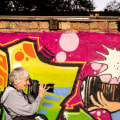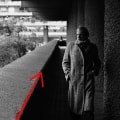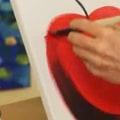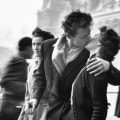Capturing the perfect street portrait isn't easy – you have to find the right person, the right scene and the right moment. But even then, it's not enough – to truly bring out the beauty and emotion of the moment, you need to color grade your photos. Color grading can help you to make your street portraits look professional, by adding depth and vibrancy to each shot. In this article, we'll provide you with post-processing tips on how to get the most out of your street portraits through color grading.
We'll discuss the different techniques and tools available, as well as how to capture the perfect street portrait in the first place. Whether you're a beginner or an experienced photographer, you'll find something new here that will help you take your street portrait photography to the next level. So let's get started!
Understanding Color Theory
Understanding the basics of color theory is essential for color grading street portraits, as it allows you to manipulate the colors of your image in order to achieve the desired effect. Color theory is based on the color wheel, which is a visual representation of the relationship between different colors.The primary colors - red, yellow, and blue - are located at the three points of the wheel. From these primary colors, all other colors can be created by combining them in various combinations. Additionally, there are secondary and tertiary colors, which are created by combining two or three primary colors in different proportions. Complementary colors are those that are opposite each other on the color wheel. When used together, complementary colors create a vibrant and balanced contrast.
For example, red and green are complementary colors, as are blue and orange. Understanding the relationship between complementary colors can be useful when color grading street portraits. In addition to the color wheel, there are also three other aspects of color theory that need to be understood: hue, saturation, and value. Hue is the name given to a color, such as red or blue. Saturation is a measure of how intense a color is, ranging from muted to vivid.
Value is the brightness or darkness of a color. By understanding the basics of color theory and how to manipulate hue, saturation, and value, you can achieve more precise and professional results when color grading street portraits.
Using Curves & Levels for Subtle Adjustments
When it comes to color grading street portraits, subtlety is key. To achieve the desired effect without overdoing it, you can use curves and levels to make small adjustments to the colors in your photos. Curves are a powerful tool that allows you to adjust the brightness and contrast of your photo with pinpoint accuracy. Curves are typically used to adjust the highlights, midtones, and shadows of an image.By adjusting each of these areas individually, you can create a more balanced, natural look. Levels are another powerful tool for making subtle adjustments to the colors in your photos. With levels, you can adjust the brightness and contrast of your photo without introducing any artifacts, such as banding or posterization. For both curves and levels, it’s important to start by making small adjustments, as even small changes can have a big impact on the overall look of your photo.
Once you’ve made the adjustments, you can fine-tune them by using the eyedropper tool. This will allow you to sample colors from the photo and make more precise adjustments. By combining the power of curves and levels, you can make subtle adjustments to the colors in your street portraits. By taking the time to make small adjustments, you can create a more balanced, natural-looking photo.
Advanced Color Grading Techniques
Split Toning is a color grading technique that is used to create a two-tone effect in a photograph. This technique is often used to add depth and drama to an image.It involves balancing the colors in the highlights and shadows of a photograph, usually by adding a complementary color to either the highlights or shadows. This technique can be used to create a vintage look or to add a unique and creative twist to your photographs.
Cross Processing is another advanced color grading technique. This technique involves manipulating the colors of a photograph in order to create a unique, dreamy look.
Cross processing is accomplished by manipulating the colors of the image and altering the temperature, contrast, and saturation levels to create an interesting and unique look.
Duotones are a type of advanced color grading technique that involves creating two distinct tones in an image. This technique is most often used for black and white images, but it can also be used for color photographs as well. This technique is created by taking one base color (usually black or white) and adding a second color to create a two-tone effect.
Duotones can be used to create interesting and unique images, as well as add depth and drama to your photographs.
By mastering these advanced color grading techniques, you will be able to take your street portraits to the next level and capture stunning images that stand out from the crowd. By understanding how to manipulate colors in your photos, you will be able to create amazing works of art that are sure to impress even the most discerning viewers.
Tips for Getting the Most Out of Color Grading
Color grading street portraits can be a challenging yet rewarding task. But with the right tips and techniques, you can easily create stunning images.Here are some key tips for getting the most out of color grading your street portraits:1.Use PresetsUsing presets is an easy way to quickly add a unique look to your street portraits. There are plenty of presets available that can give your photos a distinct style. Whether you are looking for a vintage or modern look, you can find a preset that will suit your needs.
2.Take Advantage of Natural Light
Natural light can have a huge impact on how your street portraits look. Taking advantage of natural light can make the colors in your photos pop, creating a beautiful and vibrant effect.3.Use Color Grading Tools
There are several color grading tools available that you can use to enhance your street portraits.These tools can help you adjust colors, contrast, and more to get the perfect look for your image.4.Experiment With Color SchemesExperimenting with different color schemes is a great way to create interesting and unique looks for your street portraits. You can try using complementary colors or using a monochromatic color scheme to create a unique effect.
5.Consider the Mood of the Scene
When color grading street portraits, it’s important to consider the mood of the scene. Depending on the scene, you may want to use warmer tones to create a cozy atmosphere or cooler tones to create an edgy feel. Color grading is an essential part of any street portrait photographer's post-processing workflow. With a solid understanding of color theory and the right techniques, you can ensure your photos capture perfection every time.Color grading, advanced techniques, curves, levels, and tips are all important elements for creating the perfect street portrait. So, go out there and start experimenting with color grading your street portraits today!.








